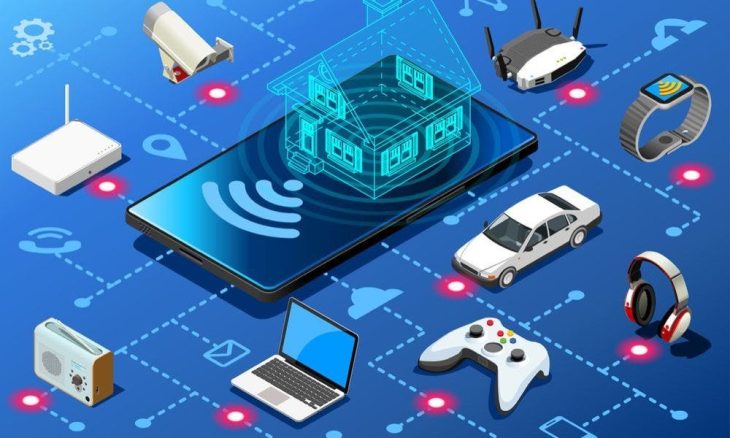
AWS Best Practises For Securing IOT Solutions, Including IAM, AWS Certificate Manager, And AWS IOT Core
The Internet of Things has become a fundamental part of many industries, from healthcare to manufacturing. IoT solutions allow businesses to collect data, automating the processes, and making informed decisions based on real-time data. However, security concerns have also increased as IoT platforms become more prevalent. This blog will discuss the best practices for securing IoT solutions using AWS services such as Identity & Access Management (IAM), AWS Certificate Manager, and AWS IoT Core.
AWS Best Practices for Securing IoT Solutions
AWS provides a comprehensive suite of services which help businesses secure their IoT solutions. By implementing these best practices, businesses can protect their devices, data, and applications from unauthorized access, malware, and other security threats.
Identity and Access Management (IAM)
IAM is a crucial component of any AWS solution, including IoT solutions. IAM provides granular control over who can access AWS resources & what actions they can perform. By using IAM, businesses can create and manage users, groups, and roles and grant permissions accordingly.
Best Practices for IAM
When implementing IAM for IoT solutions, businesses should follow these best practices:
- Use the principle of least privilege: Grant users and roles only the permissions they need to perform their tasks.
- Use multi-factor authentication (MFA): Require users to provide additional authentication factors, such as a token or a biometric factor, to access AWS resources.
- Use roles for AWS services: Create IAM roles that allow AWS services, such as AWS IoT Core, to access other AWS resources without the need for AWS credentials.
Implementing IAM for IoT Solutions
To implement IAM for IoT solutions, businesses should follow these steps:
- Create IAM users, groups, and roles as needed.
- Define policies that grant permissions to these users, groups, and roles.
- Assign IAM roles to AWS services, such as AWS IoT Core, to grant them access to other AWS resources.
AWS Certificate Manager
AWS Certificate Manager is a service that enables businesses to provision, manage, and deploy SSL/TLS certificates for their AWS resources. SSL/TLS certificates are essential for securing data in transit between IoT devices and AWS services.
Best Practices for Certificate Management:
When implementing certificate management for IoT solutions, businesses should follow these best practices:
- Use AWS Certificate Manager to provision and manage SSL/TLS certificates.
- Use certificate revocation lists (CRLs) to revoke certificates that are no longer valid.
- Use certificate expiration notifications to ensure that certificates are renewed before they expire.
Implementing Certificate Management for IoT Solutions
To implement certificate management for IoT solutions, businesses should follow these steps:
- Create a certificate authority (CA) hierarchy.
- Use AWS Certificate Manager to request and issue SSL/TLS certificates for IoT devices.
- Configure IoT devices to use these certificates to authenticate with AWS services.
AWS IoT Core
AWS IoT Core is fully managed service which enables businesses to connect IoT devices to the cloud and securely interact with them. AWS IoT Core provides features such as device shadowing, message queuing, and rule-based message routing, which make it easy to build and manage IoT applications at scale.
Best Practices for AWS IoT Core
When implementing AWS IoT Core for IoT solutions, businesses should follow these best practices:
- Use device shadowing: Device shadowing allows IoT applications to interact with devices when they are offline or disconnected. By using device shadowing, businesses can ensure that their IoT applications remain responsive and up-to-date.
- Use message queuing: AWS IoT Core provides a message queuing service that allows devices to publish and subscribe to messages. By using message queuing, businesses can decouple their IoT applications from devices and scale their solutions as needed.
- Use rule-based message routing: AWS IoT Core allows businesses to define rules that route messages based on their content. By using rule-based message routing, businesses can process and analyze data in real-time and take action accordingly.
Implementing AWS IoT Core for IoT Solutions:
To implement AWS IoT Core for IoT solutions, businesses should follow these steps:
- Create an AWS IoT Core endpoint and configure IoT devices to connect to it.
- Use AWS IoT Core to manage device certificates and security policies.
- Use AWS IoT Core rules to process and route messages based on their content.
Conclusion
AWS provides a comprehensive suite of services which help businesses secure their IoT solutions. By following best practices for IAM, certificate management, and AWS IoT Core, businesses can protect their devices, data, and applications from security threats. Implementing these best practices can help businesses build and manage IoT solutions that are secure, scalable, and reliable. Whether you are getting started with IoT solutions or looking to improve your existing solutions, implementing these best practices can help you achieve your goals and meet your business needs.
